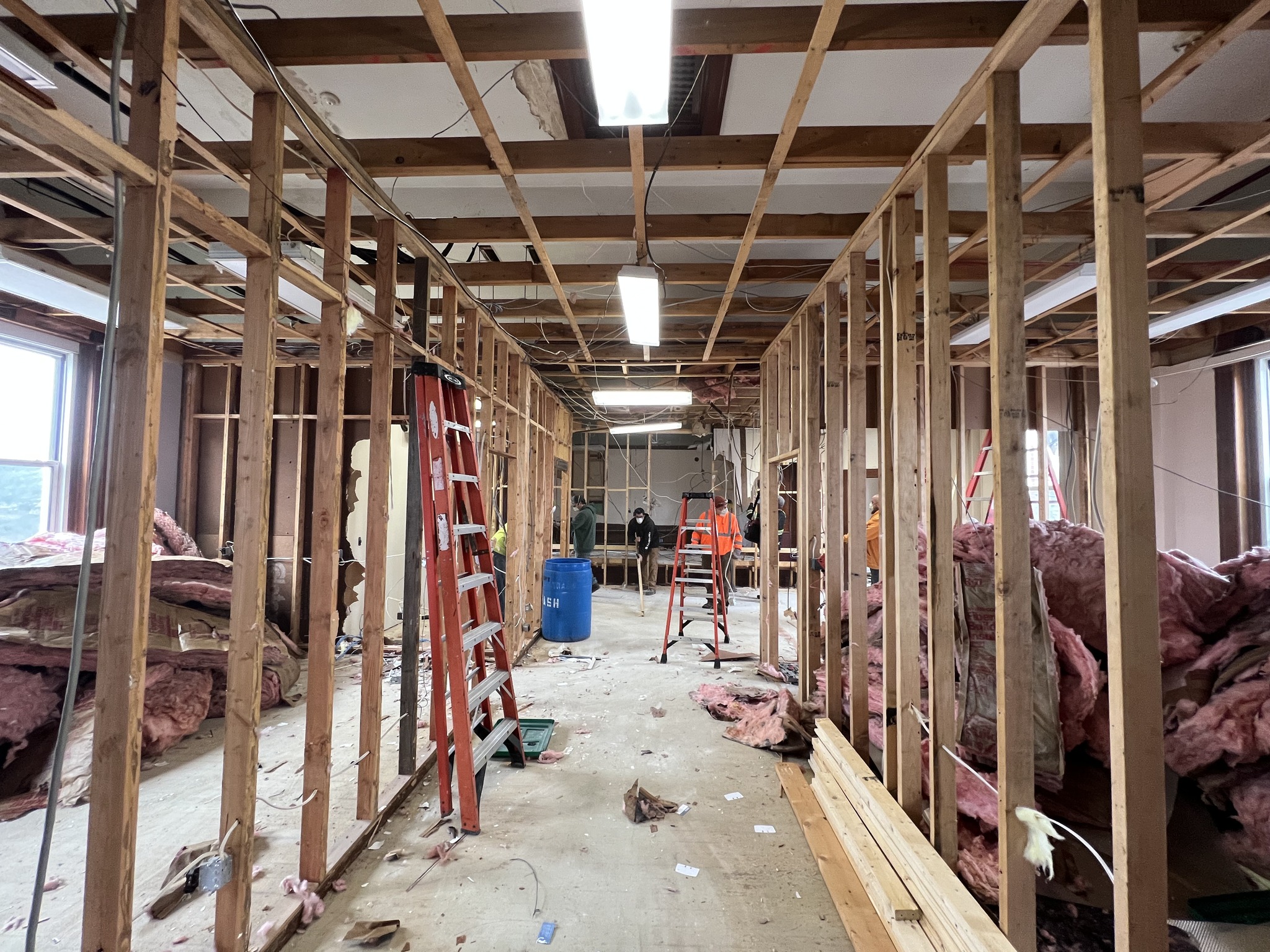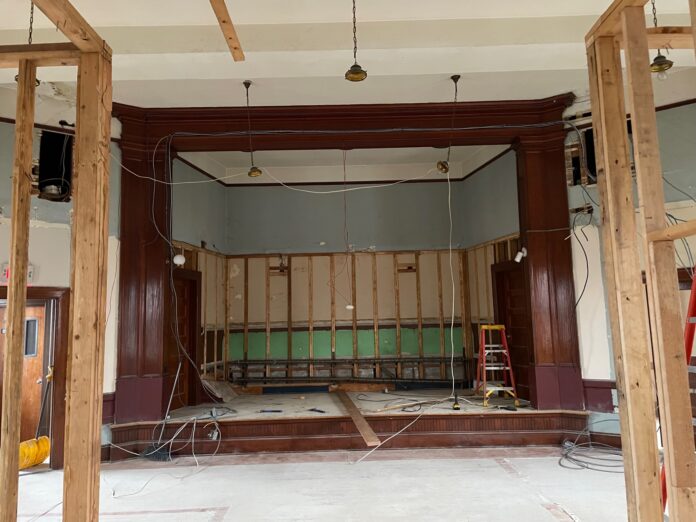NORTH SMITHFIELD – It was once a space for residents to gather for dances, plays, movie screenings and more, and later, it made a stately quarters for the town’s municipal boards to convene.
But in the 1970s, the second floor of the building now known as Memorial Town Hall was converted into office space. Walls were put up to partition new rooms, and the majestic ceilings and original woodwork – nearly a century old – were covered with layers of insulation and plaster.
Decades later, it seems a project is now underway to restore the space to its original glory. The North Smithfield Heritage Association is renovating the historic structure, and the second story may already be unrecognizable even to many who have visited the space in recent years.
The volunteer group took charge of the care and maintenance of the town-owned building at 1 Main St. in 2020, leasing the space for $1 a year, and has been hard at work since, focusing first on the ground level. There, flooring was removed and refinished, shelving relocated, and trim was installed with the intent to create a space more in keeping with the building’s historic past.
Built in 1923 by mill owner Henry Plimpton Kendall, the two-story red brick structure featuring Neo-Georgian architecture was erected on the site of a former hotel as a memorial to town residents who served during World War I. It held town offices until the new Town Hall at Kendall Dean on Green Street was opened around three years ago.
The NSHA now occupies the prominent Slatersville building, using the space for the organization’s archives, research center and headquarters.
“We renovated the downstairs a year ago before we moved in,” explained NSHA President Richard Keene.
Since then, Keene noted, an old boiler in the building failed and the town had to replace it, with the updated heating system now set to provide at least a decade of efficient service.
And now, volunteers have turned their attention to the second floor, and the uncovering of what was once a regal event space.
“We knew that the town converted the meeting hall space into individual offices back in 1971,” said Keene. “We have the prints of the original building as it was in 1923 and hope to restore its original configuration.”
This week staff with North Smithfield’s Department of Public Works stepped in to help with the second story demolition, removing carpets, partition walls and suspended ceilings, with work on track to be completed by the end of this week.

“They did an amazing job in a very short period,” Keene said. “We thought this phase would take us at least a year to complete.”
Keene noted that heritage volunteers will still need to repair the walls and ceiling, rewire the electrical circuits, paint surfaces and refinish the wooden floors in the second story space.
He said another building under NSHA’s care will take precedence, as the group works to finish the ongoing restoration of the, “Little Red Schoolhouse,” in Forestdale, another historic town building, built in 1877 to educate village children. That structure has been under renovation since 2015, and most of the outside work is now complete, but the remaining work is expected to cost around $90,000.
“That’s our primary focus right now,” said Keene, adding that depending on success with grant funding, the organization hopes to finish the school sometime in the next two to three years.
Still, the project to restore the second-story community space to something more in keeping with its past in the historic mill village will remain on the NSHA radar. While the group has yet to find any photographs taken in the original hall, locals remember paying a quarter to see movies in the space, and later, attending town council meetings there.
Keene said finishing work on that floor of Memorial Town Hall will probably take two years once it’s started. In the future, the organization hopes to exhibit town artifacts in at least part of the space.
“We’re incredibly fortunate that the town and non-profit organizations support our preservation efforts so generously, and that our volunteers spend so much of their time doing what they can to help,” Keene said.
Editor’s note: An original version of this article erroneously stated that the structure was built in 1823. We apologize for being a century off and have corrected the error.








